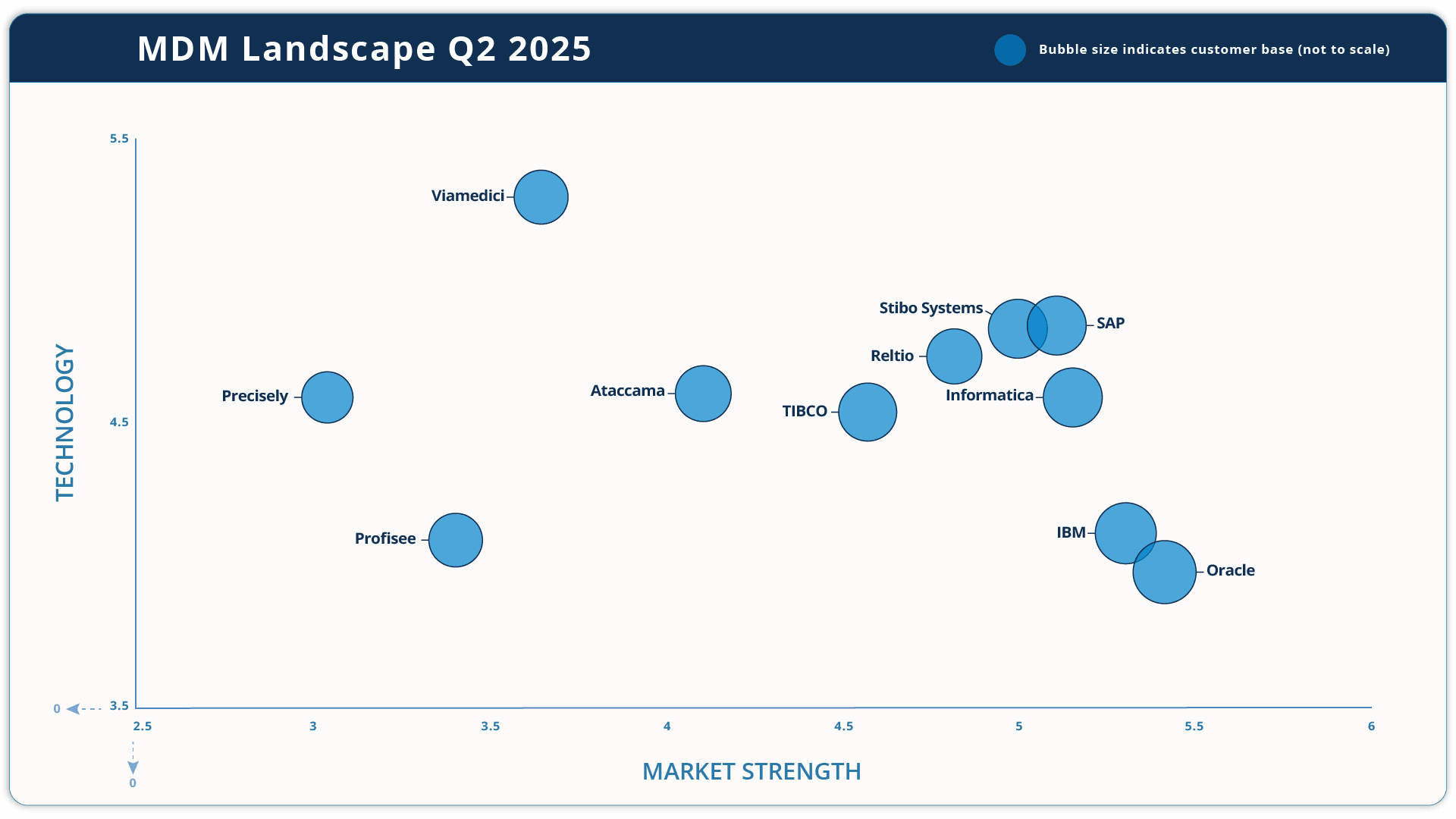Master data management (MDM) Landscape Analysis
Master data management (MDM) is the software and the supporting processes to deal with data that crosses enterprise application boundaries, such as data about products, customers, assets and locations. A typical large enterprise has hundreds of applications, and such master data is typically stored in multiple separate applications for specific needs. It is easy for such data to get out of line, and multiple competing versions of product or customer data make it difficult to get a reliable enterprise-wide overview of business performance. Master data management products connect to operational source systems and either take physical copies of data into a central master data hub, or map the data in the source systems. Various approaches are then taken to resolving inconsistencies in the various versions of master data that may be detected. For example, some systems may be more trusted than others, and some data may have been updated more recently than others. Rules to take such factors into account, called survivorship rules, are then used to determine the most trusted version of any given master data record, and these are used to construct a trusted “golden record” of data, which may involve data enrichment. The master data records can then be queried directly, or fed into downstream systems such as a data warehouse, where they may be used to populate the dimension of a star schema. The master data may also be used as a source for modern artificial intelligence (AI) purposes, where retrieval automated generation (RAG) is used to enhance a large language model with enterprise-specific data. While such augmentation is often with unstructured data such as policy manuals, product descriptions or contracts, the MDM system can provide the trusted data about things like customers and products, which can improve the quality of answers of AI models.
The master data management industry is much more mature since its emergence over two decades ago, now estimated at around $20 billion globally, with growth rates estimated at 14% or more, depending on what exactly is included in the definition and which particular analyst crystal ball is to be believed. Although the market has matured, a few new entrants are still appearing. In general, though, MDM is increasingly folded into broader data management platforms. Typically, such platforms include data quality but also data governance and data catalog functionality and sometimes data integration and movement technologies. There are also MDM vendors that specialise in particular industries, by providing deep knowledge of a particular vertical, for example, by building knowledge of specific industry standards into their products. Some vendors have deep experience of, and specific functionality for, multi-channel retailing and supplier onboarding, while others have developed deep ties in the manufacturing industry or pharmaceuticals and life sciences.
MDM vendors usually have support for public and private cloud implementations as well as on-premises installations, and hybrid implementations that combine these. In rare cases, there is support for a federation of MDM hubs that are connected, for example with a central hub at head office and local hubs in certain regions or countries, which can handle data that is specific to that geography or market in addition to data that needs to be standardises across the enterprise. This approach is well-suited to global corporations with a decentralised structure.
MDM vendors, like those in other markets, are adopting artificial intelligence (AI) to a greater or lesser degree. Machine learning has long been used for the merging and matching of candidate master data records. Generative AI can be used for content creation, such as product descriptions attached to product data records, and to automate the tagging of attributes and categories of new data. Natural language processing can be used to open up master data hubs to interrogation by business owners in a more intuitive fashion than using traditional query tools.
The main vendors in the market are summarised in the diagram below.

